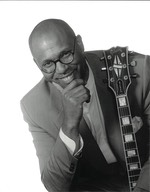
Improvisation is the art of making things up as you go. But things don’t come from nowhere. I think of having a pool or repository of data, or information, kept in an inner vault. These data are impressions that we can use as tools or inspiration or ideas to spur us on with the business of being creative. I mean actual impressions. The word impression comes from the Latin word, meaning IMPRINT. Imprimere, from in- ‘into’ + premere ‘to press. This is my theory anyway. When we practice, play, or listen to music, impressions are formed in the mind. They may be shapes, colors, images, feelings, wisps of smells or concepts. Very often music conjures these things because it’s attached, by some association, to those images and feelings. Listening to music is a creative act all on it’s own. If we pay attention, I think we watch our thoughts go by as triggers from music.
Specifically when a musician practices he’s or she is imprinting. It may be the shape of the fingers on the fretboard or keyboard. It might be the shape a chord, line or lick makes. It might be the sound of a phrase. So by repetitively drilling these exercises we’re forcing musical impressions in our minds ear. But also, and perhaps more importantly, we’re making real mental images of those things we’re practicing. We learn chords, proper fingering, scales, arpeggios, songs and progressions, patterns of various types, solos and licks. So then when we play “intuitively” we pull up those impressions, or imprints, as resources from our pool, repository, or vault. THIS is why it’s so important to practice and to practice correctly and consistently. We learn proper or improper technique because we have, through repetition, impressed upon our mind; actually taken pictures with great microscopic detail, finger positions, timing anomalies, missed notes all in conjunction with the correct ones. Impressions can be very delicate, vague, airy and imprecise. In order for them to be useful and creative tools you can pull up when needed, at any time, they must be hammered into reality. Yes there is technique, dexterity and the physical development of the fingers, but the fingers can only execute what the mind gives it.
And time, I’m guessing, seems to be how, in part at least, these impressions are stored. The real magical thing about music is that it’s attached to time in a very, very precise way. I don’t think there is quite another art form that utilizes time as importantly as music. And this music gives the listener, and you the musician, the ability to predict! So when we practice we must be very precise with time. When we’re not, we learn those imprecisions because they form the imprints and create bad timing habits because we’ve LEARNED them so carefully. When we practice precise time, we hear precise time and play precisely. And I don’t necessarily mean straight up and down metronomic time. Loose time, behind the beat, swing can still be precise, if that’s the context. Playing precise rhythm and time is the thing, I believe, that makes us better faster than anything else. Music is the art of TIME.